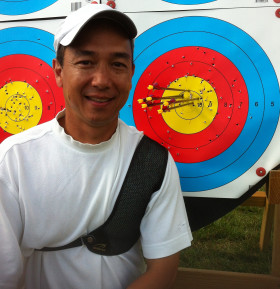The groups were too large. I just couldn’t see why this student was not able to shoot at a higher level. I went to the film and couldn’t see it. I checked the static positions and they were excellent. Yes, there were some niggling issues with some of the shot dynamics, but nothing to indicate the performances I noted. I should mention this archer was coming off a long lay off and prior to that had attained a fairly high skill level.
We tried working on overall tension in the shot with some success, but still there was more and it had yet to be identified. The student was frustrated. I was frustrated and we took a couple of days off to collect our thoughts.
I was worried this archer may become discouraged. Off to the range we went and I must admit I was more than a little concerned about how things would go. We just started shooting with little to no conversation. After 30 minutes or so, the groups had not improved, but the archer’s commitment did not waver. We spoke but found no answers. I simply stepped back and watched and watched………
It then became apparent. The archer was not setting up on point to the clicker. This caused an elongated move to actuate the clicker and caused all kinds of inconsistencies. The groups improved immediately after the archer looked his arrow into the clicker more accurately. I’m not sure why this wasn’t evident to me much earlier, but it wasn’t.
I felt extremely fortunate that the archer believed things would improve and allowed us both the time to recognize and address the issue in the shot.
There are a few take aways here. The first is that if one is persistent enough and wants to improve, one will. The second is that coaches need to continually learn, improve and recognize where their own deficiencies lie. The third is that stillness and silence allows for thoughts to be formed and accurate assessments to be made.
